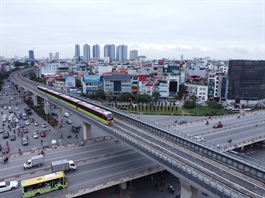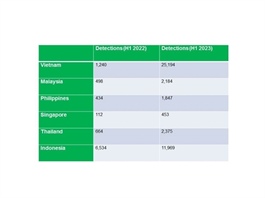Vietnam’s GDP growth forecast to expand by 4.7% in 2023: WB
Vietnam’s GDP growth forecast to expand by 4.7% in 2023: WB
Lower-than-expected growth in advanced economies and China could reduce external demand for Vietnamese exports.
Vietnam's economic growth for 2023 is set to hit 4.7%, primarily influenced by weak domestic and external demand.

Production of aircraft components at MHI Aerospace Vietnam. Photo: Pham Hung/The Hanoi Times |
The World Bank released the forecast in its latest East Asia and Pacific October 2023 Economic Update.
However, there's optimism for a recovery in the following years, with growth expected to reach 5.5% in 2024 and 6.0% in 2025.
The main driver of this growth will be domestic demand, although at a slower pace than in previous years.
In terms of inflation, the Consumer Price Index (CPI) is projected to average 3.5% this year, largely due to scheduled increases in civil servant salaries. In the following years, assuming stable energy and commodity prices, inflation is expected to decline to 3.0% in both 2024 and 2025.
On the fiscal side, there is an estimated overspending of 0.7% of GDP in 2023, reflecting a somewhat supportive fiscal policy aimed at bolstering the economy. However, the government plans to adopt a more conservative fiscal stance in 2024, aligning with its long-term development strategy for the financial industry from 2021 to 2030.
The current account is expected to improve, driven by a modest rebound in exports, a continued recovery in international tourist arrivals, and the resilience of remittances. Additionally, there is an optimistic forecast for poverty reduction, with the poverty rate projected to decline from 3.2% in 2022 to 3.0% in 2023.
Looking at the challenges, the World Bank suggested that potential factors include lower-than-expected growth in advanced economies and China, which could reduce external demand for Vietnamese exports.
Tighter monetary policies in major economies could also lead to exchange rate pressure and capital flight. Domestically, there are rising financial risks and vulnerabilities that require close monitoring and innovative solutions.
In the short term, the World Bank stressed the importance of fiscal policy continuing to support aggregate demand. This includes fully utilizing the investment budget t and addressing bottlenecks in public investment procedures. These measures could raise public investment to 7.1% of GDP in 2023, up from 5.5% in the previous year, thus supporting aggregate demand.
While monetary easing is appropriate, continued interest rate cuts could lead to interest rate differentials with global markets, potentially impacting exchange rates. To address rising financial risks, it noted that actions such as increasing banks' capital ratios and strengthening the banking prudential framework are necessary to ensure the financial sector's stability and resilience.
Meanwhile, the World Bank expected growth in developing East Asia and Pacific is projected to remain strong at 5% in 2023 but to moderate in the second half of 2023 to 4.5% during 2024.
Rising geopolitical tensions and the possibility of natural disasters, including extreme weather events, are additional downside risks to the region’s economic outlook.
“The East Asia and Pacific region remains one of the fastest growing and most dynamic regions in the world, even if growth is moderating,” said Manuela V. Ferro, World Bank East Asia and Pacific Vice-President. “Over the medium term, sustaining high growth will require reforms to maintain industrial competitiveness, diversify trading partners, and unleash the productivity-enhancing and job-creating potential of the services sector.”
|
Minister of Planning and Investment Nguyen Chi Dung reported during the Government’s monthly regular meeting on September 30 that this year's economic growth is expected to reach a maximum of 6%, falling short of the National Assembly's target of 6.5%. This deviation is attributed to both internal challenges and the impact of the global economy. The forecast was made against the backdrop of sluggish GDP growth over the first nine months of the year, which reached only 4.24%. This figure is approximately half of what was achieved during the same period in 2022. The lower-than-expected growth rate has added to inflationary pressures. Additionally, the growth drivers are encountering obstacles, including the slow recovery of the industrial sector, which grew by only 1.65% in the first nine months. In response to this forecast, Prime Minister Pham Minh Chinh has called for a full-year GDP growth scenario of around 6%, urging efforts to achieve the best possible outcome for 2023, which will lay the foundation for the year 2024. According to calculations by the Ministry of Planning and Investment, for this year's GDP to reach 6%, the economy must grow by 10.6% in the fourth quarter, nearly doubling the third quarter's growth rate of 5.33%. |























